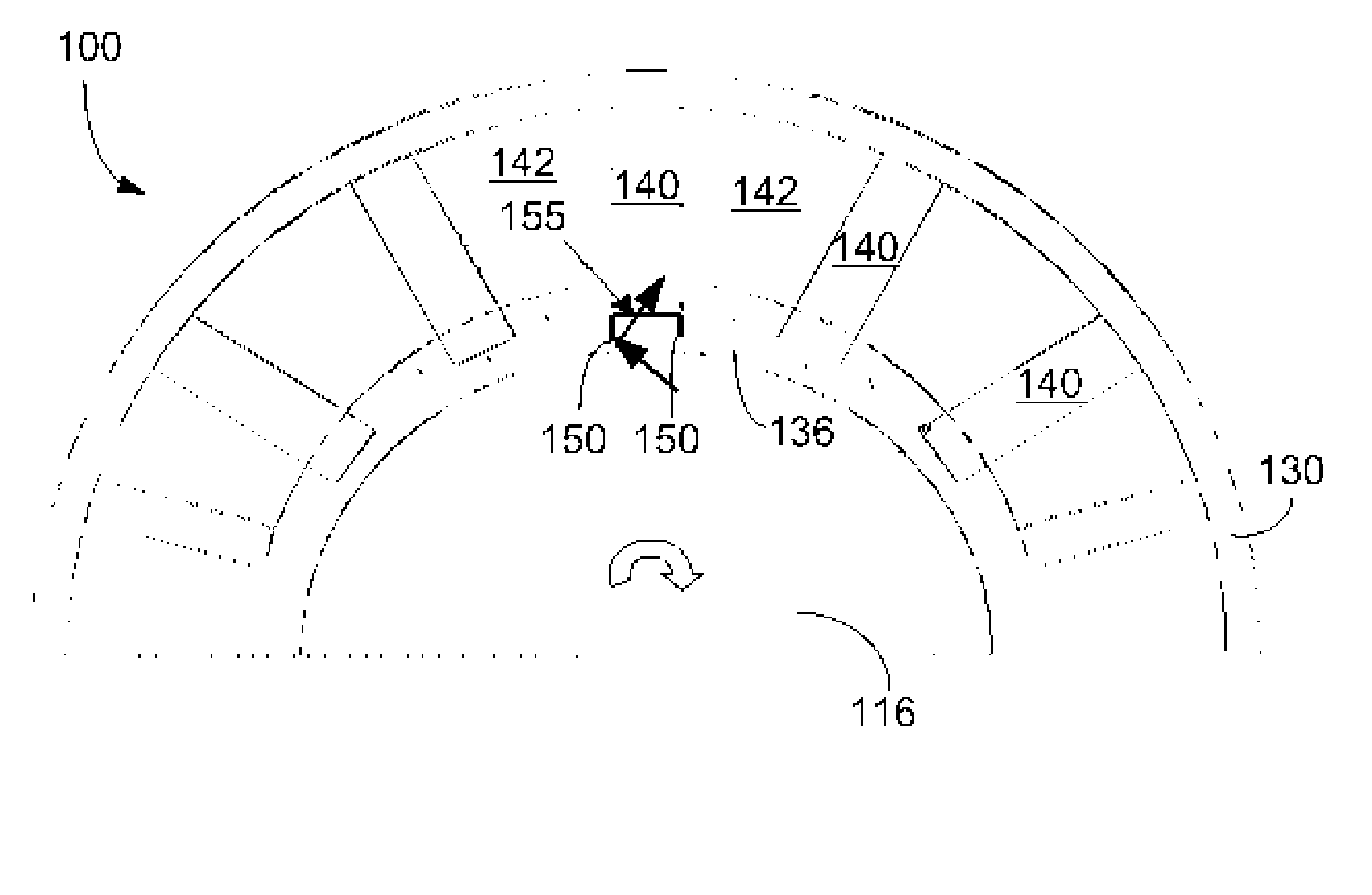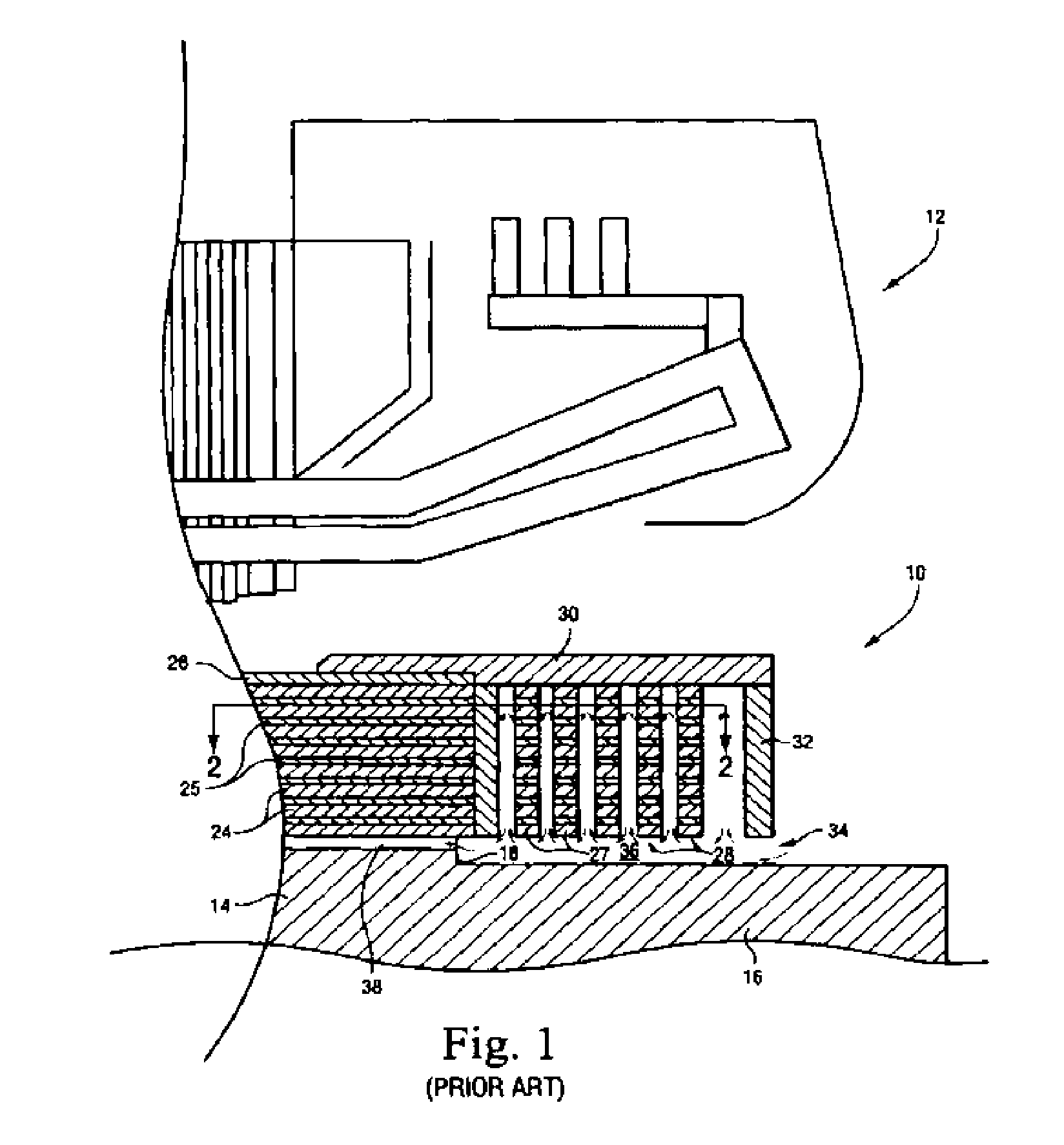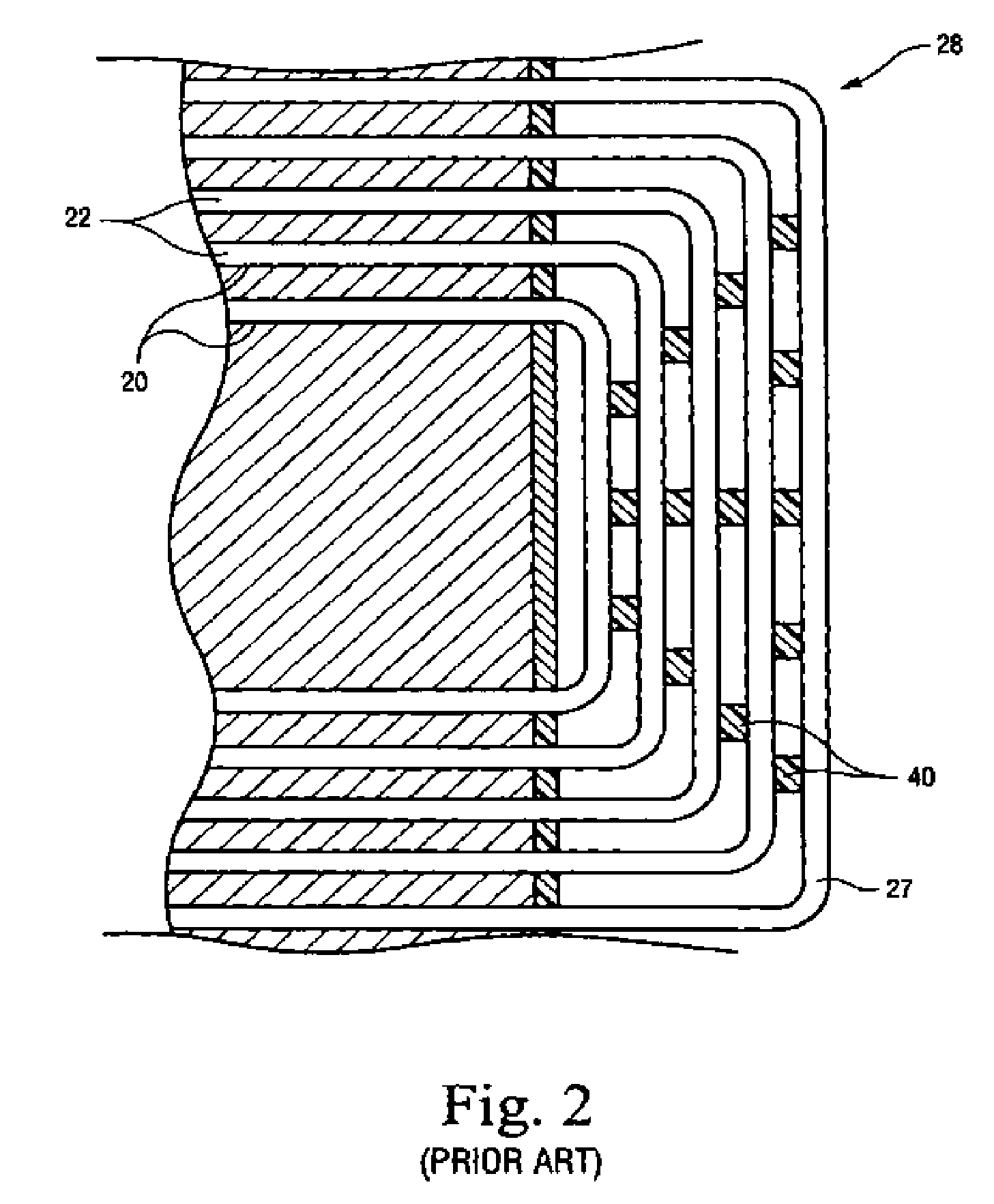Paddled rotor spaceblocks
a technology of paddled space blocks and generator rotors, which is applied in the direction of magnetic circuit rotating parts, windings, magnetic circuit shapes/forms/construction, etc., can solve the problems of limiting factors, difficult and expensive forced cooling, and limited power output rating of dynamoelectric machines such as large turbo-generators, so as to promote cooling flow and reduce relative tangential velocity
- Summary
- Abstract
- Description
- Claims
- Application Information
AI Technical Summary
Benefits of technology
Problems solved by technology
Method used
Image
Examples
Embodiment Construction
[0025] Referring now to the drawings, in which like numerals refer to like elements throughout the several views, FIGS. 1 and 2 show a rotor 10 for a gas-cooled dynamoelectric machine. The general operation of dynamoelectric machines such as large turbo-generators is well known. The rotor 10 includes a stator 12 surrounding the rotor 10. The rotor 10 includes a generally cylindrical body portion 14 centrally disposed on a rotor spindle 16 and having axially opposing end faces, of which a portion 18 of one end face is shown in FIG. 1. The body portion 18 is provided with a number of circumferentially spaced, axially extending slots 20 for receiving concentrically arranged coils 22. The coils 22 make up the rotor winding. For clarity, only five rotor coils 22 are shown, although several more are commonly used in practice.
[0026] A number of conductor bars 24 may be stacked in each one of the slots 20. Layers of electrical insulation 25 may separate the adjacent conductor bars 24. The ...
PUM
 Login to View More
Login to View More Abstract
Description
Claims
Application Information
 Login to View More
Login to View More - R&D
- Intellectual Property
- Life Sciences
- Materials
- Tech Scout
- Unparalleled Data Quality
- Higher Quality Content
- 60% Fewer Hallucinations
Browse by: Latest US Patents, China's latest patents, Technical Efficacy Thesaurus, Application Domain, Technology Topic, Popular Technical Reports.
© 2025 PatSnap. All rights reserved.Legal|Privacy policy|Modern Slavery Act Transparency Statement|Sitemap|About US| Contact US: help@patsnap.com



